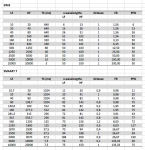I recently attended a Sim 3 training and system design seminar with Bob McCarthy, something I wish I'd done years ago. I found it really interesting, Bob is a great teacher IMHO. Thanks to Meyer for arranging these kind of seminars.
Now, I'm currently running Smaart. Happy with it s far, but I couldn't help noticing that a couple of things seems more slick and faster on Sim than Smaart. I also got the impression that measurements on Sim were more accurate, we did some measurements in difficult environments and the resolution Sim could archive was impressive.
I guess there's a few people here who have used both platforms. Is Sim really worth the extra expense compared to Smaart?
A decent laptop and a multi-channel interface is a small amount of $$$ compared to Sim. I have a usable laptop and a two-channel interface now, but I'm planning on replacing both during 2013.
Now, I'm currently running Smaart. Happy with it s far, but I couldn't help noticing that a couple of things seems more slick and faster on Sim than Smaart. I also got the impression that measurements on Sim were more accurate, we did some measurements in difficult environments and the resolution Sim could archive was impressive.
I guess there's a few people here who have used both platforms. Is Sim really worth the extra expense compared to Smaart?
A decent laptop and a multi-channel interface is a small amount of $$$ compared to Sim. I have a usable laptop and a two-channel interface now, but I'm planning on replacing both during 2013.

